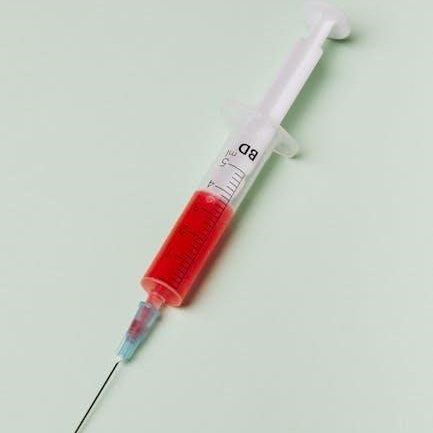Cognitive Performance Test (CPT)⁚ An Overview
The Cognitive Performance Test (CPT) is a standardized assessment measuring functional cognition. It evaluates cognitive integration within daily living activities, predicting functional capacity and guiding intervention strategies. The 2018 manual offers updated protocols.
What is the CPT?
The Cognitive Performance Test (CPT) is a standardized occupational therapy assessment designed to evaluate an individual’s cognitive abilities within the context of instrumental activities of daily living (IADLs). It’s not merely a measure of cognitive skills in isolation but assesses how those skills translate into real-world performance. The CPT uses a series of seven subtests simulating common daily tasks, such as medication management, dressing, shopping, and using a telephone. Each subtest provides insights into different aspects of cognitive function and its impact on daily living. The test provides a comprehensive profile of an individual’s cognitive-functional abilities, going beyond simple diagnostic labels to reveal functional implications.
CPT’s Purpose and Applications
The primary purpose of the CPT is to assess the impact of cognitive impairments on an individual’s ability to perform everyday tasks. It’s used to identify strengths and weaknesses in functional cognition, providing valuable information for treatment planning and intervention. The CPT is applicable in various settings, including occupational therapy, neuropsychology, and geriatric care. Its results help predict an individual’s capacity to function independently in various contexts, such as managing medications, preparing meals, or maintaining personal hygiene. The CPT’s versatility allows for both baseline assessment and tracking progress over time, offering valuable data for monitoring treatment efficacy and adjusting intervention plans as needed. This makes it a powerful tool in rehabilitation and long-term care.
Target Population and Age Range
The Cognitive Performance Test (CPT) is primarily designed for adult and geriatric populations. Its application is particularly relevant for individuals experiencing cognitive difficulties, including those with neurological conditions, traumatic brain injuries, or age-related cognitive decline. The CPT’s focus on functional abilities makes it suitable for assessing individuals across a spectrum of cognitive impairment, from mild to moderate levels. While specific age cutoffs might not be explicitly defined, the test’s relevance increases with age, given the higher prevalence of cognitive changes in older adults. The assessment’s emphasis on practical, everyday tasks makes it adaptable to various levels of cognitive function within the target age range, providing valuable insights into functional capacity regardless of the severity of cognitive impairment.
CPT Subtests and Administration
The CPT manual details seven subtests simulating daily activities⁚ medication management, dressing, shopping, toasting, phoning, washing, and travel. Administration protocols and scoring are clearly outlined.
Detailed Description of Each Subtest
The CPT manual provides a thorough description of each of its seven subtests. The “Medbox” subtest assesses medication management skills, requiring participants to sort pills according to instructions. “Dress” evaluates the ability to dress oneself, focusing on sequencing and dexterity. “Shop” simulates a shopping trip, testing list following and money handling. “Toast” assesses the ability to safely operate a toaster. “Phone” involves making a pretend phone call, evaluating communication and problem-solving skills. “Wash” evaluates handwashing techniques, emphasizing hygiene and safety. Finally, “Travel” simulates planning and executing a short trip, assessing navigation and route planning skills. Each subtest is meticulously described, outlining the specific steps, materials, and scoring criteria. The detailed instructions ensure consistent administration and reliable interpretation of results, making it a valuable tool for occupational therapists and other healthcare professionals.
Administration Protocols and Scoring
The CPT manual details standardized administration protocols ensuring consistent test administration across various settings and clinicians. These protocols outline the steps for setting up the testing environment, providing clear instructions to the participant, and managing the timing of each subtest. The manual also provides specific guidelines for observing and documenting participant behavior during each task. Scoring procedures are clearly defined for each subtest, typically using a scale that reflects the level of independence and the amount of assistance required. The scoring system considers both accuracy and efficiency, allowing for a comprehensive assessment of functional cognitive abilities. Detailed scoring examples and explanations are included to aid in accurate interpretation of results, minimizing inter-rater variability and ensuring reliability.
Materials Required for Administration
The CPT manual provides a comprehensive list of materials needed for administering the test, ensuring consistent and reliable assessment across different settings. These materials are specifically designed to simulate real-life activities, enhancing the ecological validity of the assessment. Essential items include standardized props such as a medication box, clothing items, utensils, and a shopping list. The manual also specifies the need for score sheets and a timer, ensuring accurate recording of performance data. Additional materials may include instructions for the participant, a designated testing area that minimizes distractions, and potentially a video recording device for later review and analysis. The inclusion of all necessary materials enhances the validity and replicability of the CPT assessment.
Interpreting CPT Results
The CPT manual details scoring, interpretation of individual subtest scores, and clinical implications of overall performance. Higher scores reflect greater independence in daily living.
Scoring System and Interpretation
The Cognitive Performance Test (CPT) manual provides a detailed scoring system for each of its seven subtests. Each subtest is scored individually, considering factors such as the level of independence demonstrated, the amount of cueing or assistance required, and the time taken to complete the task. Scores typically range from 1 to 6, with higher scores indicating greater cognitive ability and functional independence. The manual explains how to calculate an overall CPT score, often an average across the seven subtests. This overall score offers a summary measure of the individual’s functional cognitive performance. The manual also includes guidelines for interpreting both individual subtest scores and the overall score, relating them to levels of functional performance in daily life. Interpretation should always consider the individual’s specific context and goals. The manual provides examples of how different score profiles might be interpreted in clinical practice, highlighting the importance of a holistic assessment that considers the individual’s strengths and weaknesses across different cognitive domains.
Understanding Individual Subtest Scores
The CPT manual emphasizes the importance of analyzing individual subtest scores beyond the overall CPT score. Each subtest, such as “Medbox,” “Dress,” or “Shop,” assesses specific cognitive-functional skills. Analyzing individual scores reveals an individual’s strengths and weaknesses across different daily living tasks. For example, a low score on “Medbox” might indicate difficulties with medication management, while a high score on “Dress” might suggest preserved self-care skills in that area. This detailed analysis helps clinicians understand the specific cognitive challenges an individual faces. The manual provides detailed descriptions of each subtest, outlining the cognitive processes involved and the behaviors indicative of different score levels. This granular analysis facilitates the development of targeted intervention plans focusing on specific areas of need. Understanding these nuances allows for a more comprehensive and personalized approach to treatment and rehabilitation.
Clinical Implications of CPT Scores
CPT scores have significant clinical implications for diagnosis, treatment planning, and monitoring progress in individuals with cognitive impairments. Low scores may indicate a need for increased support with activities of daily living (ADLs), prompting recommendations for assistive devices, caregiver support, or environmental modifications. Conversely, higher scores may suggest greater independence and self-management capabilities. The CPT’s focus on functional abilities allows clinicians to translate cognitive test results into practical recommendations for interventions. The manual provides guidance on interpreting scores within the context of an individual’s overall clinical presentation, including medical history and other assessment data. Longitudinal monitoring using the CPT can track the effectiveness of interventions and identify areas requiring adjustment. This functional assessment informs decisions regarding discharge planning, community reintegration, and long-term care needs. The CPT’s clinical utility lies in its ability to directly inform real-world interventions.
CPT Manual⁚ Key Features and Updates
The CPT manual provides comprehensive guidelines for administration, scoring, and interpretation, incorporating updates based on current cognitive neuroscience research and evidence-based practices. The 2018 revision is key.
The Revised 2018 Manual⁚ Key Changes
The 2018 revision of the Cognitive Performance Test (CPT) manual reflects significant advancements in cognitive neuroscience and research on neurocognitive disorders (NCDs). Key updates include refined administration protocols, incorporating props for enhanced task simulation, and detailed task analyses for each subtest. The manual now provides clearer, more user-friendly scoring procedures, facilitating accurate interpretation of results. Furthermore, it offers comprehensive profiles for evidence-based intervention planning, directly linking assessment findings to targeted therapeutic strategies. A streamlined documentation template and appropriate billing codes are included to simplify clinical workflow. Finally, a comprehensive reference list of empirical studies supports the CPT’s validity and reliability, strengthening its clinical utility. These improvements ensure the CPT remains a current and effective tool for assessing functional cognition.
Access to the CPT Manual and Resources
The CPT manual and associated resources are readily accessible through various channels. Performance Health, a key distributor, offers the manual for purchase through their website and customer service line (800-323-5547). Their online presence provides additional information and support materials. SP Ableware, another reputable supplier, also offers the CPT manual and related supplies, including standardized props such as medication boxes and scoring sheets, through their website (www.spableware.com) and contact number (800-443-4926). Furthermore, professional organizations focused on occupational therapy and cognitive assessment may provide links or information regarding the CPT manual and its applications. Direct inquiries to these organizations can yield further details about acquiring the manual and associated resources. Always ensure you obtain the most recent, updated version of the manual.
Evidence-Based Intervention Based on CPT Results
The CPT’s revised 2018 manual significantly enhances its utility by providing profiles for evidence-based interventions. These profiles directly link CPT subtest scores to specific, targeted strategies for improving functional performance. The manual incorporates the latest advances in cognitive neuroscience, ensuring recommendations align with current best practices. Therapists can use these profiles to create individualized treatment plans based on a patient’s unique strengths and weaknesses as identified by the CPT. This approach facilitates a more effective and efficient intervention process. The integration of evidence-based interventions into the CPT framework promotes a data-driven approach to therapy, leading to improved patient outcomes and increased efficacy. The updated manual provides a structured approach to treatment planning, enhancing the overall clinical value of the CPT.
CPT and Other Cognitive Assessments
The CPT offers a unique perspective, assessing functional cognition within daily life contexts, unlike purely diagnostic cognitive tests. It complements other assessments, providing a holistic view of cognitive abilities.
Comparison with Other Standardized Tests
Unlike many standardized cognitive tests focusing solely on isolated cognitive domains (e.g., memory, attention), the CPT uniquely emphasizes functional application within real-world activities. While tests like the MMSE screen for general cognitive impairment, the CPT delves into the practical implications of cognitive deficits on daily living. Other assessments, such as the Allen Cognitive Level Screen, may evaluate cognitive processing, but the CPT directly observes performance in simulated daily tasks. This functional approach differentiates the CPT, providing a more comprehensive understanding of an individual’s cognitive abilities in relation to their daily life independence and safety. The CPT’s focus on observable performance during simulated activities, such as medication management or meal preparation, offers valuable insights not readily obtained from purely paper-and-pencil tests. This makes it a valuable tool for occupational therapists and other professionals seeking to assess functional capacity and guide interventions.
CPT’s Unique Contributions to Cognitive Assessment
The CPT stands apart by directly assessing the functional application of cognition in everyday scenarios. Unlike traditional cognitive tests that primarily measure isolated cognitive skills, the CPT examines how these skills translate into real-world performance. This emphasis on functional cognition provides a richer understanding of an individual’s ability to manage daily tasks. The CPT’s detailed scoring system, encompassing seven distinct subtests, allows for a nuanced evaluation of specific functional challenges. This granular level of assessment helps therapists identify targeted intervention strategies. Furthermore, the CPT’s incorporation of standardized props and procedures ensures consistent administration and reliable score interpretation across different settings and clinicians. The detailed manual provides clear guidelines for assessment and interpretation, enhancing the reliability and validity of the results, leading to more effective treatment plans.
Limitations of the CPT
While the CPT offers valuable insights into functional cognition, it’s crucial to acknowledge its limitations. The test’s focus on instrumental activities of daily living (IADLs) might not fully capture cognitive deficits impacting other areas of life. The assessment’s reliance on observation and performance of tasks could be influenced by factors beyond cognitive abilities, such as physical limitations or motivation. The scoring system, while detailed, may not fully account for the nuances of individual performance variations. The CPT primarily assesses performance within a structured testing environment, potentially underestimating or overestimating real-world abilities. Furthermore, the CPT’s reliance on direct observation limits its applicability in certain situations, such as individuals with communication difficulties or those who require significant assistance. The test’s specific focus on IADLs necessitates supplemental assessments for a comprehensive cognitive evaluation.


